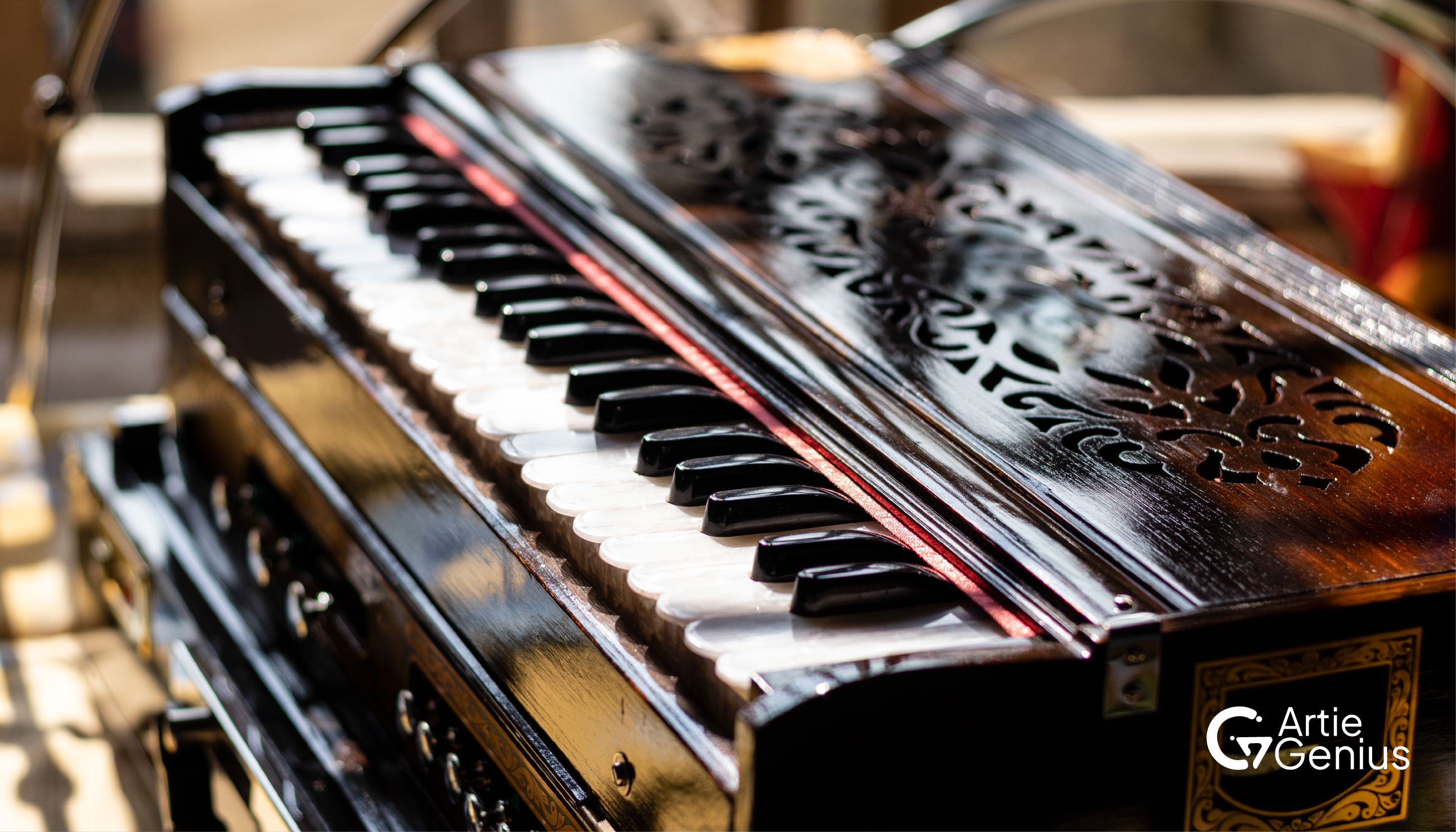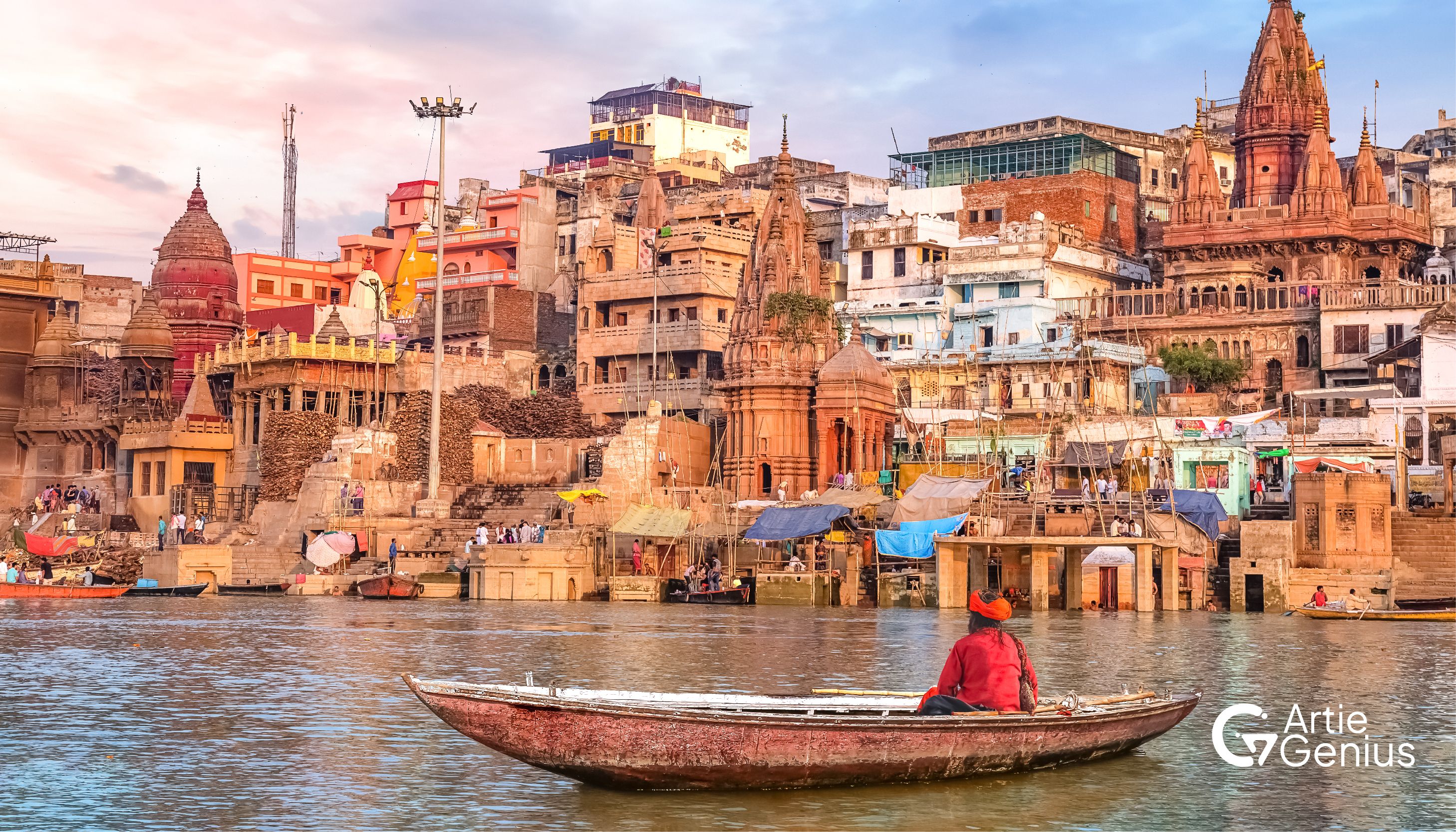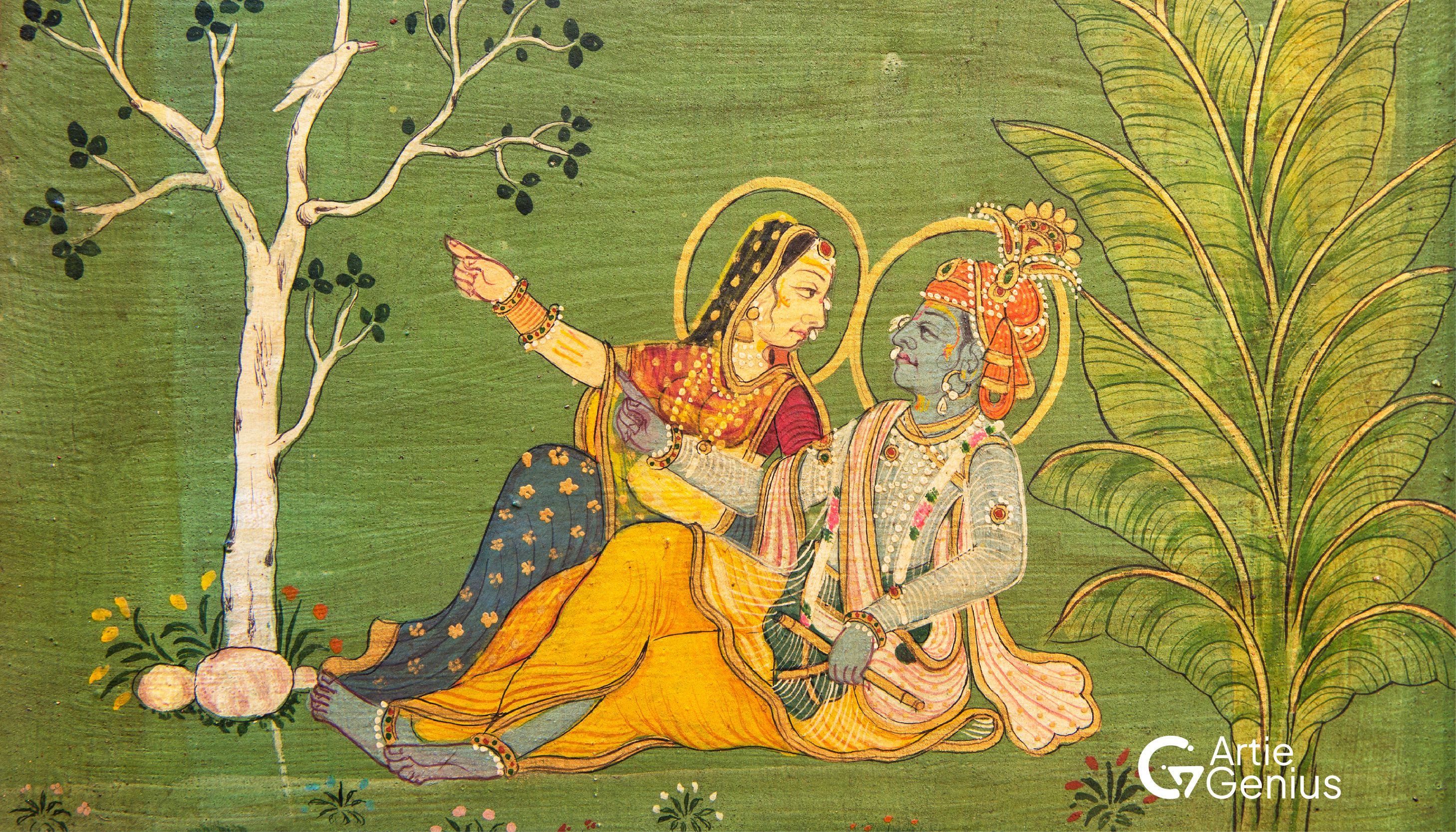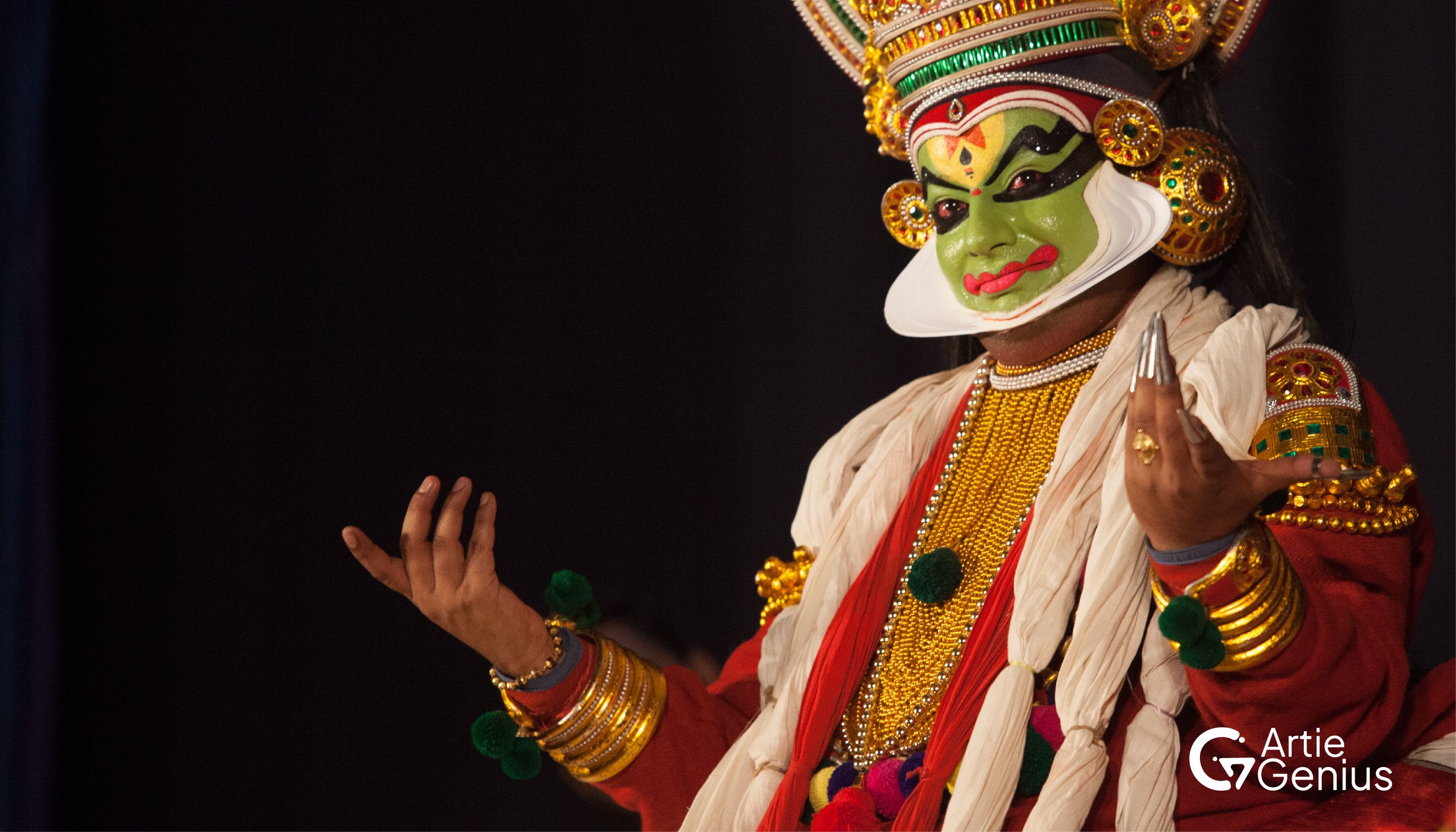Have you ever stopped to truly appreciate the richness and depth of Indian art and culture? While many of us are familiar with Bollywood hits or the soulful tunes of devotional music, the vast and magnificent ocean of Indian music often remains unexplored.
With this article we intend to dive in on a captivating journey through the diverse and timeless landscape of Indian music.
The Two Prominent Branches Of Indian Classical Music:
Dhrupad: Often referred to as the "Father of Indian Classical Music," Dhrupad is characterized by its slow tempo, profound emotional depth and emphasis on intricate rhythmic patterns.
It is one of the oldest forms of Indian classical music, dating back to the medieval period. Dhrupad is traditionally performed by a male singer accompanied by a tanpura and a pakhawaj.
The lyrical content of Dhrupad compositions often includes themes of devotion and spirituality, reflecting the music's roots in ancient Hindu traditions.The performance of Dhrupad is marked by its adherence to strict rules of melody and rhythm, with a focus on purity of tone and expression.
Its austere beauty and focus on improvisation have captivated audiences for centuries.
Khayal: Evolving from Dhrupad, Khayal offers a more expressive and lyrical experience.
It allows for greater freedom in improvisation, enabling the artist to explore the emotional nuances of a raga (melodic framework) and create a unique blend of melody and emotion.
Khayal emerged as a distinct form in the 18th century and is now the most popular form of classical vocal music in North India. It is characterized by its elaborate melodic and rhythmic improvisations, often accompanied by tabla and harmonium.
The compositions in this music style are typically devotional or romantic in nature, with themes ranging from love and longing to the beauty of nature and the divine. The performance of Khayal involves ornamentations, rhythmic patterns and expressions, making it a beautiful form of music.
Beyond The Classical Realm
Indian music thrives in a vibrant mosaic of different genres, each reflecting the cultural and artistic essence of specific regions and communities.
Let's explore some of these captivating styles in more detail:
Thumri: "Music is the language of the heart," aptly describes a semi-classical vocal form known for its romantic and devotional lyrics that originated in the temples of North India.
Thumri is often performed in a light classical style, with a focus on expressive singing and melodic embellishments.The themes of Thumri often revolve around love, longing and the beauty of nature, making it a popular form of music among audiences of all ages.The performance of Thumri involves a high degree of improvisation, with singers adding their own personal touch to the compositions, making each performance unique and enchanting.
Ghazal: This poetic genre, characterized by love poems set to music, originated in Persia and found a unique home in India. Ghazals are known for their melancholic beauty and sophisticated use of Urdu poetry, creating a deeply moving experience for listeners.
Often sung in a classical style, this Indian classical music is usually accompanied by tabla and harmonium.
Ghazals are love poems, expressing the pain and longing of unrequited love or the joy and ecstasy of union.
The performance of Ghazal requires a deep understanding of poetry and music, as singers must convey the meaning and emotion of the lyrics through their voice and expression. They are known for their haunting melodies and soul-stirring lyrics, making them a timeless and beloved form of music.
Tappa: Tappa is a style of classical vocal music known for its fast and rhythmic compositions. It originated in Punjab and is characterized by its lively and energetic melodies. Tappa is often performed in a fast tempo, with intricate melodic patterns and rhythmic variations.
The lyrics of Tappa are typically light-hearted and humorous, often depicting scenes from everyday life or conveying messages of love and joy.The performance of Tappa requires a high level of skill and dexterity, as singers must maintain a rapid pace while delivering melodic phrases and rhythmic patterns.Tappa is a popular form of music in Punjab and has gained popularity in other parts of India as well, thanks to its lively and engaging nature. Modern Expressions: A Fusion of Tradition and Innovation
Bollywood Music: Bollywood music, also known as filmy music, is the popular music of Indian films. It is a fusion of various styles, including classical, folk and Western music and is known for its catchy tunes and expressive lyrics. Bollywood music plays a significant role in Indian culture, shaping the musical tastes and preferences of millions of people.
The lyrics of Bollywood songs often reflect the themes and emotions portrayed in the films, ranging from romance and celebration to sorrow and longing. Bollywood music has a wide appeal, transcending linguistic and cultural barriers to reach audiences around the world. It's a lively and dynamic genre of music that constantly evolves and innovates, mirroring the shifting tastes and trends of Indian society.
Natyasangeet: Natyasangeet is the music used in Indian classical dance dramas. It is known for its dramatic and emotive compositions, often based on classical ragas and talas. Natyasangeet plays a crucial role in enhancing the narrative and emotional impact of dance dramas, providing a musical backdrop that complements the movements and expressions of the dancers. The compositions of Natyasangeet are ranging from devotional songs to romantic ballads, each serving to enhance the storytelling and thematic elements of the dance drama. Natyasangeet is performed live during dance dramas, with musicians playing traditional instruments like the tabla, harmonium and flute to create a rich and immersive musical experience for the audience.
Folk Music: India's rich culture of folk music includes various styles, each reflecting the cultural heritage of its region. From the soulful Baul music of Bengal to the energetic Lavani music of Maharashtra, folk music plays a crucial role in preserving India's cultural diversity. Folk music is often passed down orally from generation to generation, with each community adding its unique flavor and style to the music. Folk songs are typically based on themes of everyday life, including love, nature and social issues, making them relatable and accessible to people from all walks of life. Folk music is often accompanied by traditional instruments like the dholak, harmonium, and ektara, creating a lively and vibrant sound that is both captivating and soul-stirring.
Conclusion In the contemporary world, Indian music continues to evolve, embracing new influences and creating captivating soundscapes.The ever-popular Bollywood music, while incorporating Western musical elements, often retains the essence of traditional melodies and instruments.
From the ancient chants of the Vedas to the contemporary melodies of Bollywood, Indian music has transcended time and space to captivate audiences around the world.
It is a colloquy to the creativity, diversity and resilience of the Indian people, reminding us of our rich cultural heritage and the need to preserve it for future generations. As we continue on this musical journey, let us celebrate the beauty and richness of Indian music, embracing its timeless melodies and eternal rhythms.



